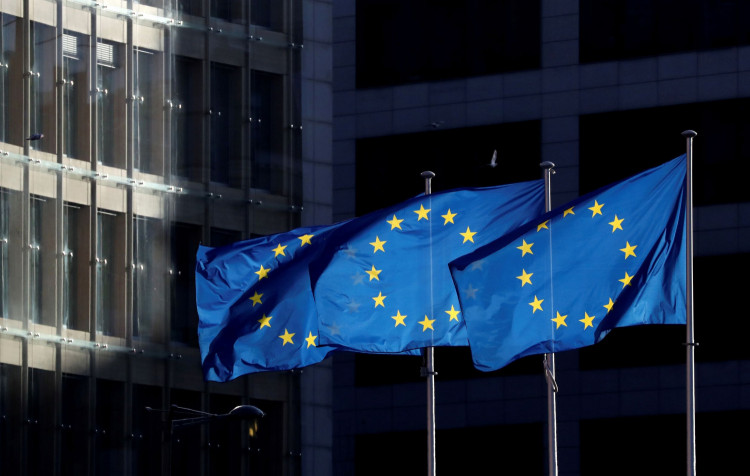The European Union has made significant progress in its political efforts to achieve independence in key minerals. According to the European Commission's official website, on November 13, member states and the European Parliament reached a political agreement on the latest text of the European Critical Raw Materials Act (CRMA). Following approval by the two institutions (the European Parliament and the European Council), the act will officially come into effect. The European Parliament's Committee on Industry, Research, and Energy is set to vote on it on December 7.
The act, which took only eight months from submission to preliminary agreement, marks a relatively rapid progression considering the EU's typically lengthy bureaucratic processes. The approval of the two major decision-making bodies is widely anticipated to proceed without significant suspense.
First announced in the EU's annual State of the Union address in September last year, the CRMA aims to ensure the security and sustainable supply of a series of critical raw materials essential for Europe's green energy transition. This is primarily achieved through increasing domestic production rates and diversifying sources. The European Commission proposed the framework of the act on March 17 this year, and the latest agreement text has undergone some modifications since then.
In the initial draft of the act, the EU identified a list of 34 critical raw materials crucial for the clean energy transition, most of which are precious metals. Of these, 16 particularly important or scarce materials were included in the strategic raw materials list, mainly minerals significant to green, digital, defense, and space industry technologies, such as cobalt, copper, magnesium, and titanium.
For the materials on the critical list, certain domestication requirements must be met in mining, processing, and recycling. By 2030, the annual consumption volume's domestic mining proportion needs to reach 10%, domestic processing 40%, and domestic recycling 15%. For strategic raw materials, dependence on a single third country must not exceed 65%.
The new text retains the benchmark figures for extraction and processing but raises the domestic recycling benchmark from 15% to at least 25%. Additionally, aluminum has been added to the strategic raw materials list, bringing the total to 17 minerals. Synthetic graphite will also be included in the strategic list within three years, joining natural graphite already on the list.
The act also requires relevant companies to conduct supply chain risk assessments for their strategic raw materials. Large companies in related fields, such as battery manufacturers, hydrogen producers, renewable energy generators, data transmission and storage, or aircraft production, must regularly assess their strategic raw materials supply chains. They are obligated to submit information on material sources, factors affecting their supply, and vulnerabilities in supply disruptions.
Furthermore, the act clarifies and simplifies the licensing procedures for strategic projects. For instance, the total duration of the licensing process for mining projects should not exceed 27 months, and for processing and recycling projects, no more than 15 months.
This act is seen as a blueprint for Europe's industrial policy on secure, sustainable raw material supply. Nicola Beer, a member of the European Parliament from Germany's Free Democratic Party, stated that the EU is creating certainty in project planning for private investors through targeted economic incentives, which will promote mining, processing, and recycling in Europe.
Teresa Ribera Rodríguez, Spain's Acting Third Deputy Prime Minister and Minister for the Ecological Transition and Demographic Challenge, remarked that the new agreement text lays the foundation for Europe's strategic autonomy. She believes Europe's dependence on raw materials is a "fatal weakness" in its competitiveness, but the CRMA can transform this weakness into a strength, ensuring the industry's lifeline in a truly sustainable manner.
The EU's raw materials act could significantly impact China's supply chain. According to a report by the European Federation for Transport and Environment (T&E), the EU's main challenge in the field of critical raw materials is its "extremely concentrated" dependence on third countries. The report cites that China is the EU's sole foreign supplier for processed rare earths, accounting for 85%-100% of its total as of 2023. Chile accounts for 79% of Europe's lithium supply, and the Democratic Republic of Congo 63% of its cobalt supply.
Most of the processing of these minerals is conducted in China. The report suggests that China is almost monopolistic in the midstream of the EU's raw materials supply chain. Additionally, countries like Indonesia, Chile, Namibia, and Zimbabwe tightening their export controls is another major challenge for the EU, reflecting a trend of resource nationalism.
Besides strengthening domestic supply, the EU is also diversifying its supply chain, mainly through strategic partnership memorandums with different countries. For instance, in 2021, the EU signed memorandums of understanding with Canada and Ukraine. In 2022, similar agreements were signed with Namibia and Kazakhstan, and this year, similar partnerships were established with Argentina, Chile, Zambia, and the Democratic Republic of Congo, among others.






